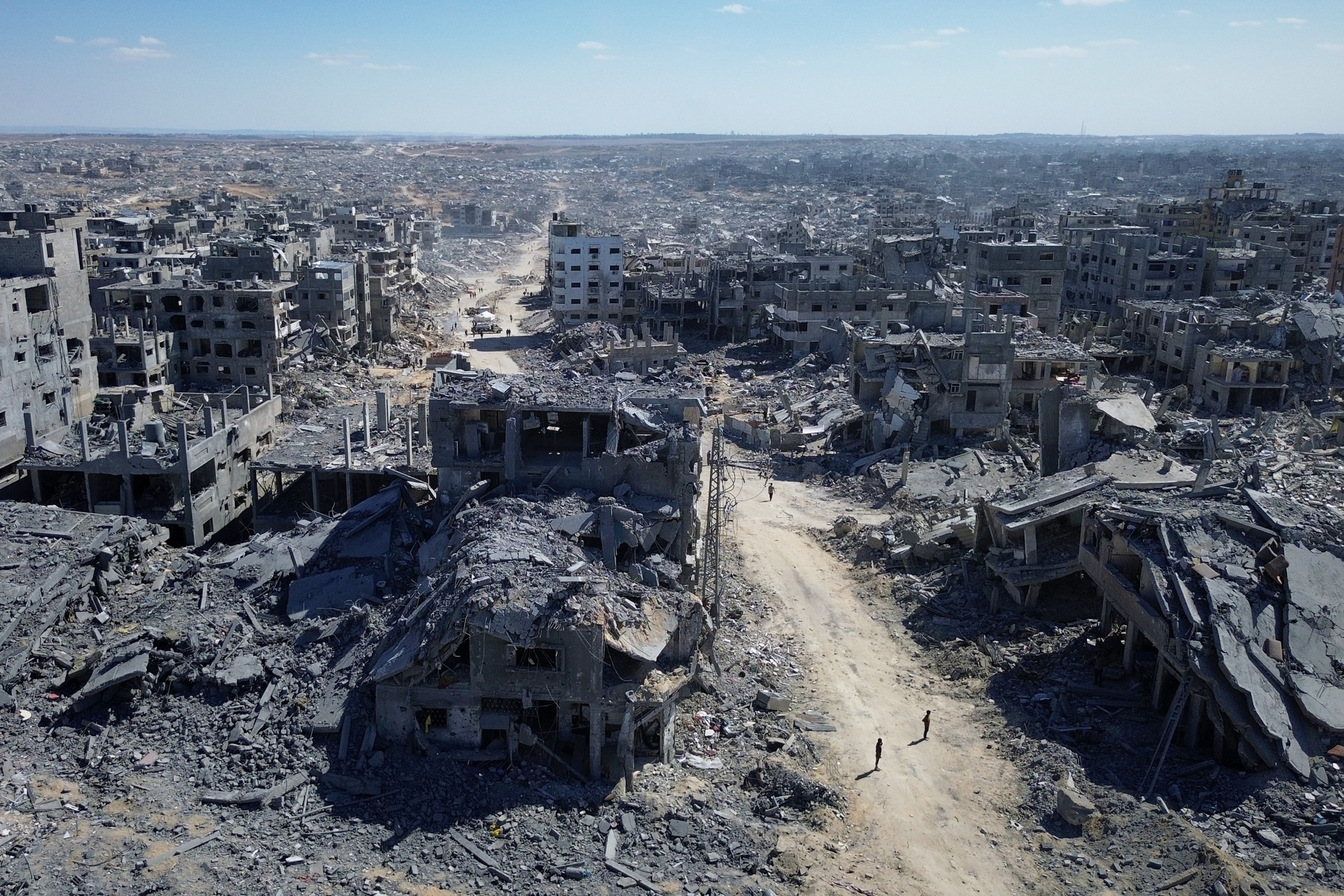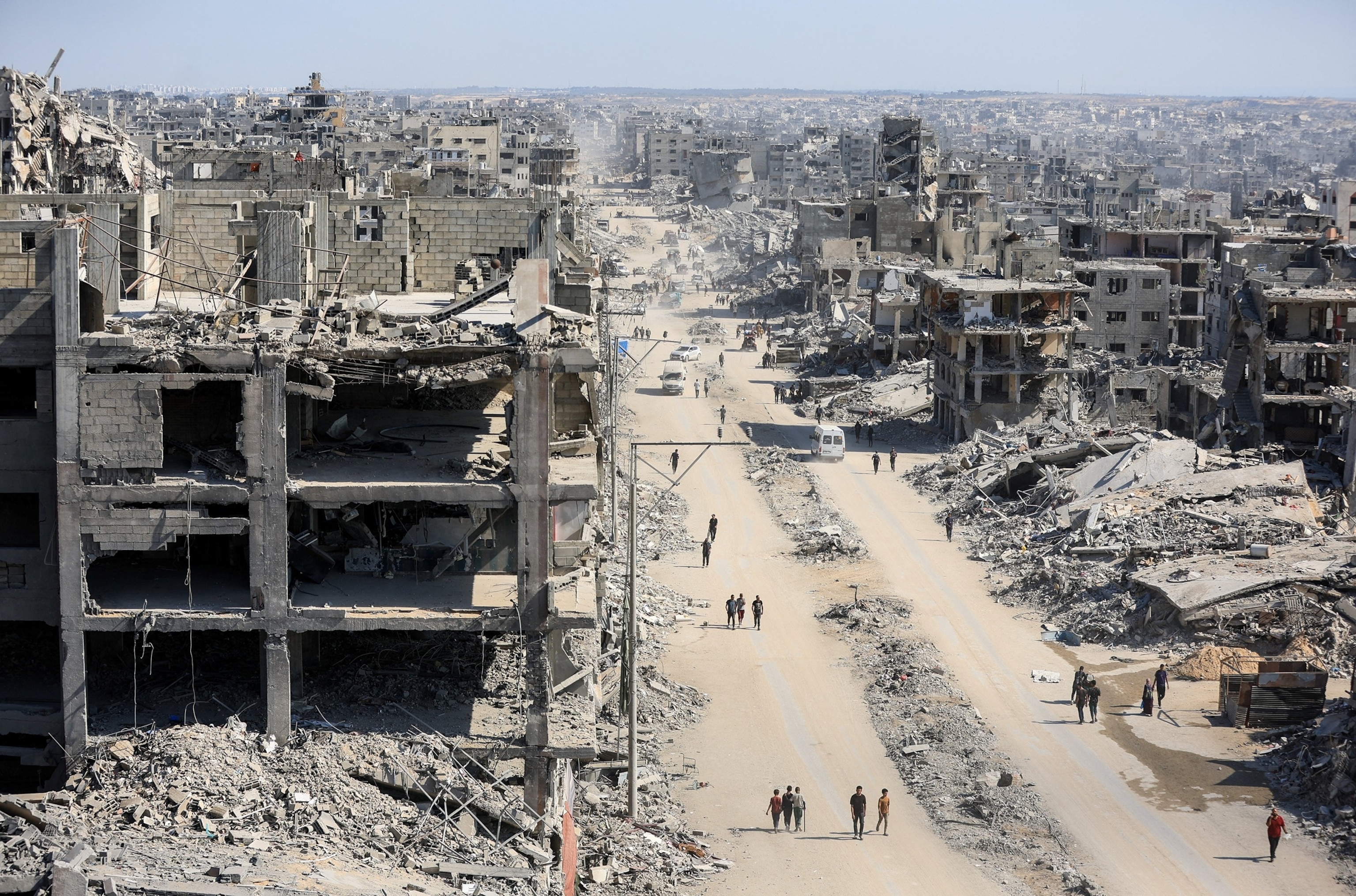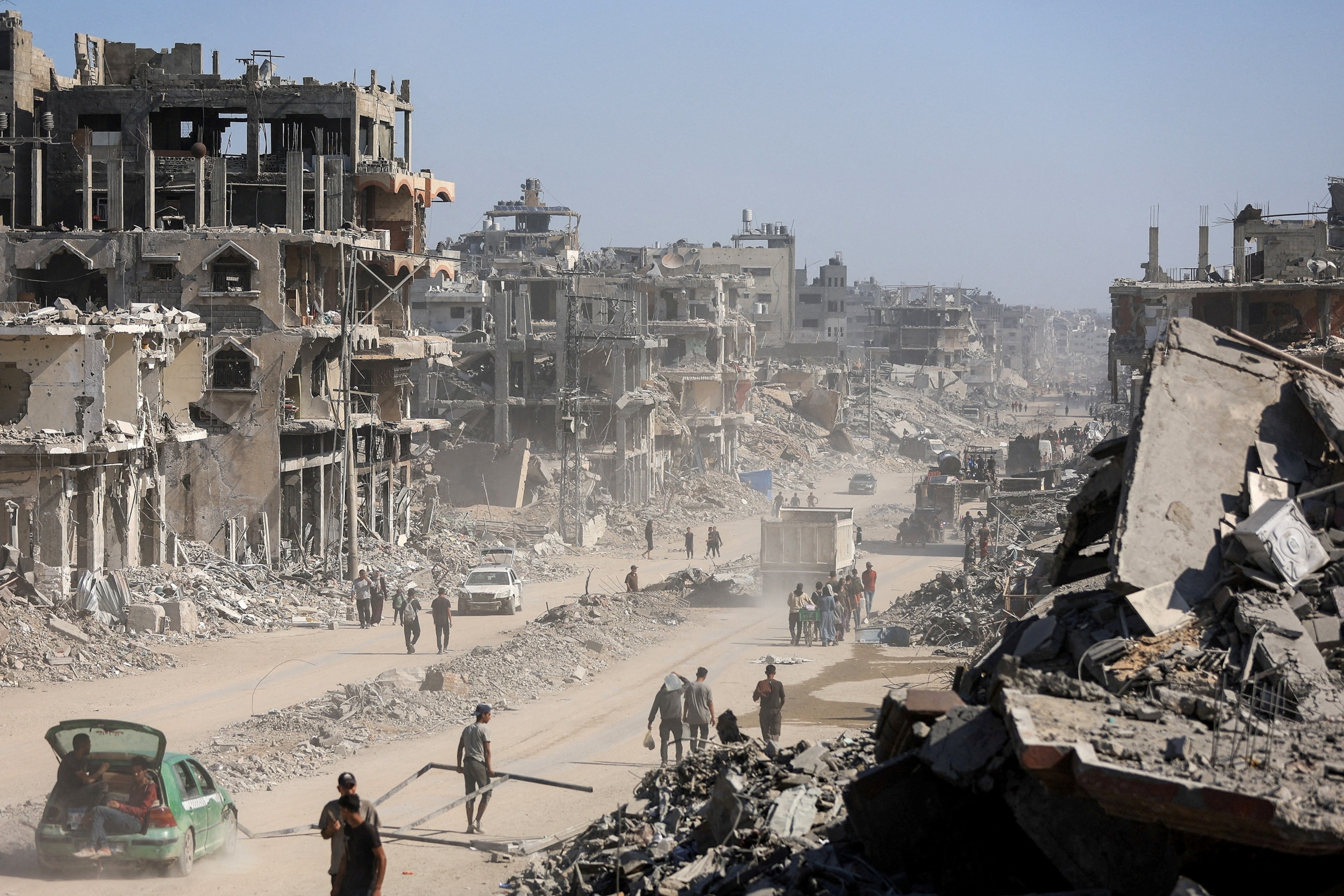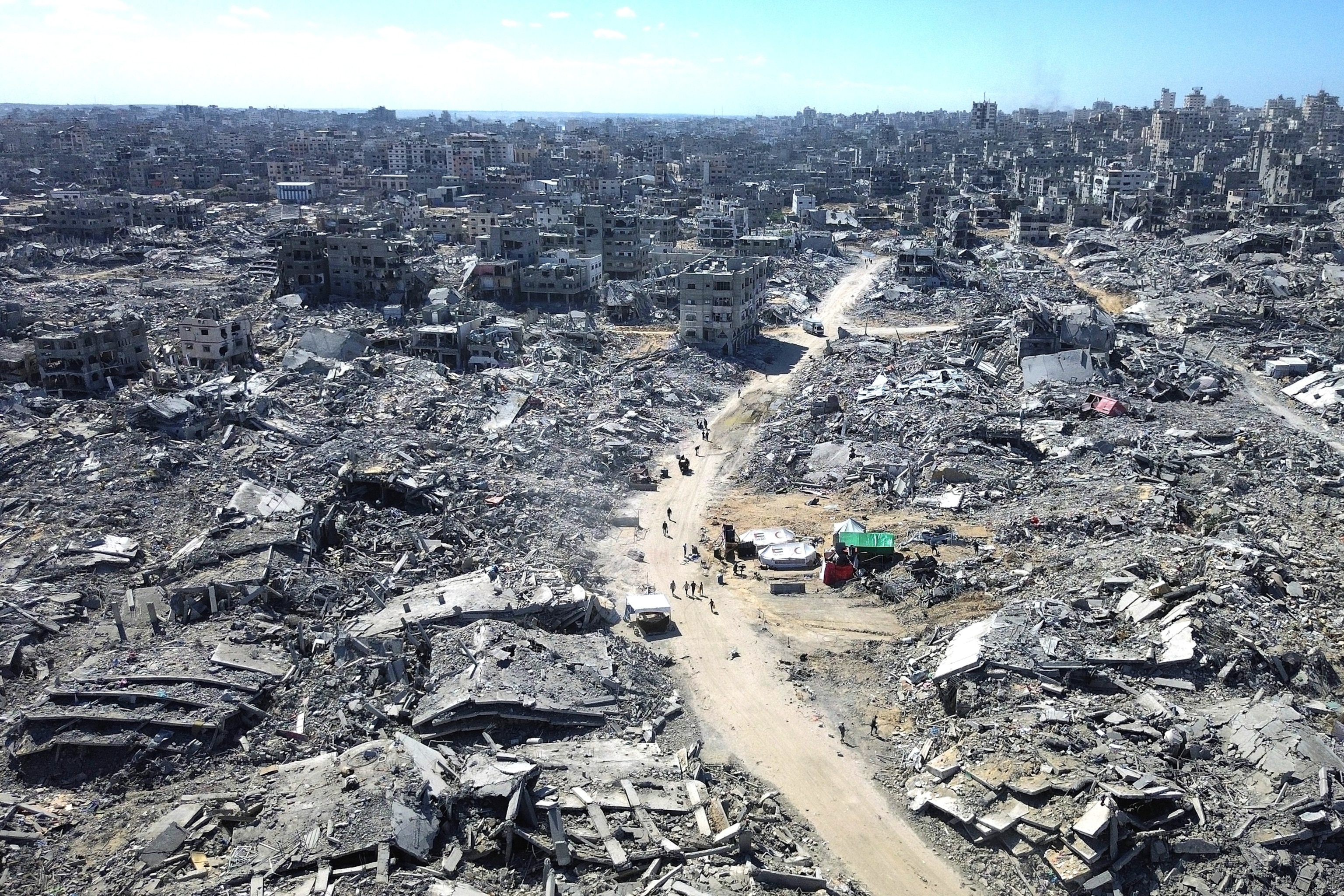With a fragile ceasefire in place between Israel and Hamas, many questions remain about the reconstruction of the Gaza Strip. It may take decades, not years, to rebuild Gaza because of the massive destruction, an expert at the Brookings Institution told ABC News.
According to the ceasefire agreement, the Gaza Strip will be rebuilt for the Palestinian people. Jaco Cilliers, a United Nations Development Program official, said at a news conference on Tuesday that he had already cleared about 81,000 tons of debris from Loop Strip and continued to do so.
However, it is unclear when reconstruction will begin and who will fund the effort, Brookings Institute expert Hady Amr told ABC News.
“I don’t think there is any modern comparison to what will have to happen in the Gaza Strip right now,” said Amr, former U.S. representative for Palestinian affairs from 2022 to 2025. “The level of destruction and devastation is absolutely immense.”

Buildings destroyed during two years of Israeli army bombing are seen in Gaza City, October 15, 2025.
AP
About 83% of all buildings in Gaza City alone were damaged as of September 23, according to the United Nations Satellite Center. About 40% of those buildings were destroyed.
“Imagine that not only was your house destroyed, your block was destroyed, your neighborhood was destroyed, but also 80 to 90% of the universe that you have access to,” Amr said.
Schools, hospitals, as well as water and electricity infrastructure have been devastated during the two years of war due to Israel’s extensive military campaign in the Gaza Strip, Amr said.
“It’s going to be incredibly difficult for people to continue surviving while reconstruction takes place,” Amr said.
Israel has faced heavy criticism and condemnation for its military action in Gaza from humanitarian and aid rights groups.
In September, the International Association of Genocide Scholars (the world’s largest group of scholars studying the issue) passed a resolution saying that Israel’s “policies and actions” in Gaza “meet the legal definition of genocide,” established by the UN in 1948.
Israel has denied that it is committing genocide in Gaza and denied claims that it has attacked civilian infrastructure. As part of the ceasefire agreement, Israel agreed to allow greater volumes of much-needed aid into Gaza.
Recovery
Significant amounts of equipment and supplies will be needed to begin recovery, another expert said.
“With the rubble and the mass destruction, there is also concern that there are a number of victims, of bodies, that are buried in that rubble; they would also have to be exhumed,” said Mona Yacoubian, director and senior adviser of the Middle East Program at the bipartisan nonprofit think tank. Center for Strategic and International Studies, told ABC News.

Palestinians walk through the rubble of destroyed buildings, amid a ceasefire between Israel and Hamas, in Gaza City, October 16, 2025.
Dawoud Abu Alkas/Reuters
Before reconstruction can begin, there need to be areas that are safe and free of unexploded ordnance, Yacoubian said. Amr echoed this point, noting that clearing unexploded ordnance and removing debris will be a “huge problem” that could take years.
In the meantime, services such as running water and electricity need to be restored, according to Yacoubian.
“It’s going to take a massive increase in life-saving assistance just to make sure that people get food and medical assistance and also shelter, maybe tents and all kinds of things that are necessary,” he said.
The ceasefire agreement ensures that humanitarian aid can resume its immediate entry into Gaza on a larger scale.

Palestinians walk through the rubble of destroyed buildings, amid a ceasefire between Israel and Hamas, in Gaza City, October 16, 2025.
Dawoud Abu Alkas/Reuters
“At a minimum, aid amounts will be consistent with what is included in the January 19, 2025 agreement on humanitarian aid, including the rehabilitation of infrastructure (water, electricity, sewage), rehabilitation of hospitals and bakeries, and the entry of equipment necessary to remove debris and open roads,” says the agreement published by the White House.
Since the ceasefire came into effect on October 10, it is unclear how much additional humanitarian aid has been allowed into Gaza, although Israel has long maintained that it has always allowed enough aid into Gaza.
The UN and other international aid organizations have reported that they can move more freely through Gaza in areas where the IDF has withdrawn, but additional border points have not yet been opened.
Challenges ahead
Many challenges remain, starting with whether this is truly the end of the conflict, according to Amr.
“The central challenges today are to end the war, to get Israel to end its military occupation, and then we need to get to a situation where there can be a security force that comes in to provide basic security. Once that happens, that’s when reconstruction can begin,” Amr said.
He highlighted another issue in the reconstruction.
“Freedom of movement of people and goods, that is the central challenge. The Palestinians have the skills and the knowledge and, in fact, much of the Persian Gulf was built with Palestinian knowledge, experience and labor. Tens of thousands of Palestinians have long worked in Israel as construction workers,” Amr said.
“It’s just a matter of having access to the basic freedom to import what they need to function,” he added.
Who will pay?
About $70 billion will be needed to rebuild Gaza, according to an operational damage and needs assessment conducted jointly by the United Nations, the European Union and the World Bank.
European and Arab nations, Canada and the United States appear willing to contribute to the estimated $70 billion needed for reconstruction. Gaza, the U.N. official said Tuesday.
“We have received very positive news from some of our partners, including European partners…Canada,” about their willingness to help, said official Cillers. he said at a news conference, adding that there were also talks with the US.

Palestinians walk along a street surrounded by buildings destroyed during two years of Israeli army bombing in Gaza City, October 15, 2025.
AP
Oil-rich Arab Gulf states will likely be willing to pay for Gaza reconstruction, say Amr and Yacoubian. Egypt could also provide a “logistical base,” he noted.
“I think the United Arab Emirates, Qatar and Saudi Arabia are prepared to finance this. I think Turkey has a great interest in doing it, but its relations with Israel are… at a low point,” Amr said.
However, Yacoubian expressed his belief that more progress needs to be made toward a Palestinian state before countries commit.
“I think we could certainly see the Gulf countries funding it, but they have signaled that they will not fund reconstruction in Gaza in the absence of a long-term solution to the conflict. And in particular, they are looking to see demonstrated progress on the path to a Palestinian state,” Yacoubian said.






